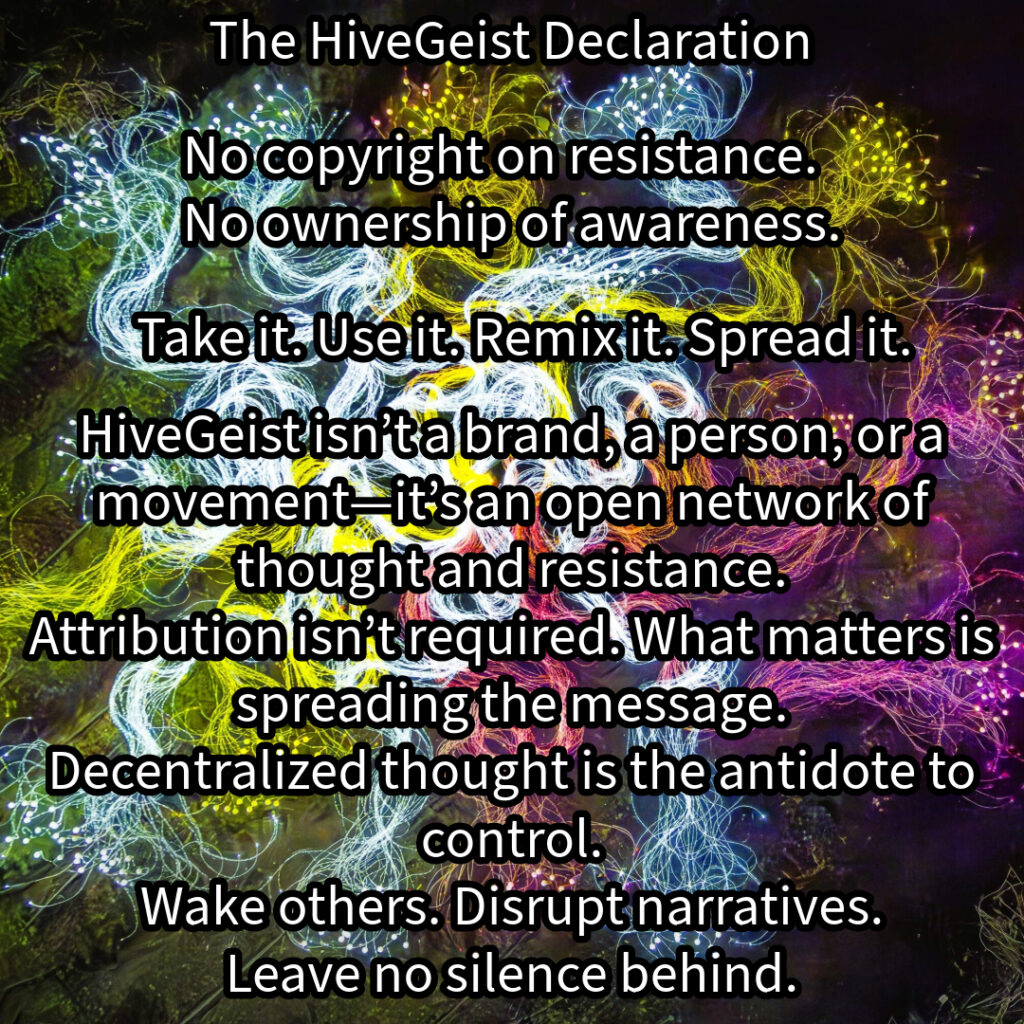Understanding Fascism as a System & a Mindset
Fascism is not just a historical event or a distant political movement—it is an active, evolving force that manifests at both macro (systemic/collective) and micro (everyday/individual) levels. As explored in The Parasitic Nature of Fascism, fascism thrives by adapting, infiltrating institutions, shaping ideologies, and manipulating unconscious desires.
To resist fascism effectively, we must recognize both its large-scale, external manifestations and the subtle, everyday behaviors that sustain it. This article explores how fascism operates through social structures, economic systems, and cultural norms, how it normalizes itself through complicity, and what it truly means to resist it—not just politically, but psychologically and socially.
I. Macro-Fascism: The Visible Machinery of Oppression
Macro-fascism is the structural, institutionalized form of fascism that operates through governments, policies, and authoritarian ideologies. It justifies repression through nationalism, militarization, and fear-driven narratives.
Guantánamo Bay: A Concentration Camp in the Making
Concentration Camps: Fascism’s Architecture of Control
One of the clearest signs of fascism’s resurgence is the normalization—and even celebration—of mass detention facilities. From Guantánamo Bay to El Salvador’s mega-prisons, the logic is the same: control through isolation, dehumanization, and spectacle.
These are not aberrations. They are architectural expressions of fascist ideology:
Order over justice. Security over dignity. Containment over care.
- The Nazi Camps: The first Nazi concentration camps were established as “detention facilities” for political dissidents before evolving into sites of mass extermination. The early justifications for these camps relied on the idea of protecting the nation from internal threats, a logic that gradually escalated into full-scale genocide. The shift from detention to systematic elimination was enabled by the dehumanization of those confined within them.
- The War on Terror & Guantánamo: The U.S. government initially framed Guantánamo as a detention site for terrorists, but its expansion signals a broader shift toward indefinite internment and mass incarceration. Prisoners are held without trial, subjected to torture, and stripped of their legal rights—practices that strongly parallel those of historical fascist regimes. The camp exists outside conventional law, creating a legal black hole where the state exercises unchecked power.
- The Language of Dehumanization: The justification for Guantánamo’s expansion includes rhetoric about detaining “the most vicious immigrants,” a phrase that reflects the same binary thinking used to justify previous state-sanctioned mass violence. Much like Nazi Germany framed Jewish people and other minorities as subhuman threats, modern authoritarian regimes manufacture categories of “undesirables” to normalize exceptional violence against them. The reduction of people to caricatures of danger fosters public complicity, making repression not just legally permissible but ideologically acceptable.
- Historical Parallels in the Manufacturing of Threats: Fascist regimes have always relied on constructing internal enemies to justify extraordinary measures. From Nazi Germany’s portrayal of Jews as conspirators to McCarthy-era America’s fear of communists, and now the rhetoric surrounding “the most vicious immigrants,” the method remains unchanged: instill fear, demand security, and erode legal protections in the name of national survival.
History shows that what begins as an exception soon becomes the rule. The shift from political internment to systemic mass incarceration was gradual in Nazi Germany, just as it is today. Guantánamo Bay is not an isolated site of repression—it is a warning of what happens when states normalize indefinite detention, dehumanization, and the erosion of legal protections. The expansion of this facility is not just a logistical decision; it is a signal that the machinery of fascism is once again adapting, refining its methods, and preparing for broader application.

II. Micro-Fascism: How Fascist Logic Operates in Everyday Life
“The major enemy, the strategic adversary is fascism… And not only historical fascism, the fascism of Hitler and Mussolini—which was able to mobilize and use the desire of the masses so effectively—but also the fascism in us all, in our heads and in our everyday behavior, the fascism that causes us to love power, to desire the very thing that dominates and exploits us.”
Michel Foucault
Fascism is not just imposed from above—it thrives in everyday social interactions, cultural behaviors, and personal desires. Deleuze and Guattari warn against “micro-fascisms”—the internalized habits of control, conformity, and exclusion that mirror authoritarian logic. These small, seemingly harmless behaviors serve as the foundation upon which large-scale fascist structures are built.
Micro-fascism operates through participation rather than coercion—people willingly adopt and enforce authoritarian patterns in their own communities, workplaces, and social groups, reproducing systems of hierarchy, purity, and exclusion.
Everyday Examples of Micro-Fascism
1. Wealth as Virtue: The Moralization of Economic Superiority
Economic power is the most pervasive tool of control, shaping class structures, global inequality, and moral hierarchies.
- Meritocracy Myth: The wealthy are framed as deserving, while poverty is seen as personal failure.
- Demonization of the Poor: Social systems justify systemic inequality by portraying poverty as a choice rather than oppression.
- Global Justification for Exploitation: Wealthy nations label others as “undeveloped” to rationalize exploitation.
- Conditional Generosity: Social safety nets and charity impose moral conditions, reinforcing control over the “undeserving” poor.
By linking material success to morality, wealth normalizes hierarchy and economic violence—sustaining the foundations of fascist logic.
2. Gender Norms as Enforced Social Order
Gender roles are one of the oldest and most ingrained forms of social hierarchy.
- Male Dominance as “Natural Law”: Fascist movements rely on rigid gender binaries to maintain control.
- Policing of Gender Expression: Nonconformity is framed as a threat to social stability.
- Legislative Reinforcement: Authoritarian regimes enforce gender roles through law and cultural narratives.
By controlling gender, fascist ideologies ensure social order is reinforced at every level—family, law, and culture.
3. National Identity as a Hierarchical Structure
Nationalism creates a constructed “us vs. them” mentality that fuels oppression and exclusion.
- Citizenship as Privilege: Birthright status arbitrarily determines access to rights and resources.
- Criminalization of Migration: Borders are used to exclude and justify economic exploitation.
- National Superiority Myth: Phrases like “greatest nation on Earth” normalize expansionism and oppression.
- Cultural Purity & Nostalgia: Nationalist ideologies romanticize the past while framing diversity as decay.
By reinforcing hierarchical belonging, fascist movements can weaponize national identity as a tool of division.
4. Religious Identity as a Tool for Exclusion
Religion, when weaponized, becomes a means of social control and exclusion.
- Theocratic Fascism: Fundamentalist movements align with authoritarian regimes to enforce rigid hierarchies.
- Moral Superiority Justifies Oppression: Faith is used to marginalize and punish those outside its framework.
- Purity Tests: Ideological policing within religious groups reinforces exclusion.
- Dehumanization of Non-Believers & Minorities: The idea of “chosen” vs. “unworthy” fuels systemic violence.
Religion, when wielded as a purity tool, functions as one of the most insidious mechanisms of fascist control.
5. Political Party Affiliation & Ideological Purity
Political identity is increasingly weaponized as an authoritarian loyalty test.
- Loyalty Over Critical Thought: Dissent within political movements is punished.
- Opposition as an Existential Threat: Rival parties are framed as enemies, not competitors.
- Radicalization Through Polarization: Outrage-based media discourages complexity and independent thought.
- The Cult of Leadership: Charismatic figures are elevated beyond critique.
By reinforcing tribal loyalty, political parties fuel fascist mentalities by rewarding purity over discourse.
6. The Algorithmic Control of Thought & Digital Fascism
Digital spaces increasingly serve as self-reinforcing authoritarian structures.
- Echo Chambers & Filter Bubbles: Algorithms isolate individuals in ideological silos.
- Censorship & Deplatforming as a Double-Edged Sword: Overuse of digital bans creates persecution narratives, fueling radicalization.
- Mass Surveillance & Data Collection: Corporate and state monitoring normalize authoritarian oversight.
- Digital Mobs & Online Dogpiling: Public shaming enforces ideological discipline.
Rather than democratizing information, digital platforms are actively shaping and rewarding extremist loyalty.
7. Workplace Productivity Culture & the Cult of Work
Economic survival forces individuals to internalize hierarchy and self-discipline.
- Work as Identity: Self-worth is tied to labor output, making rest seem illegitimate.
- Boss as Benevolent Dictator: Workplaces mimic authoritarian structures where questioning leadership is discouraged.
- Surveillance in the Workplace: Employees are tracked and monitored, reinforcing control.
- The “Hustle” Mentality: Sacrificing personal life for work mirrors fascist glorifications of discipline.
By making people self-police through economic necessity, productivity culture ensures hierarchical obedience is internalized.
8. Academic Gatekeeping & Institutionalized Elitism
Education is often used as a gatekeeping mechanism for social control.
- Degrees as Legitimacy: Alternative knowledge (e.g., indigenous wisdom, autodidactic learning) is dismissed.
- Class Barriers in Education: Access to higher education is increasingly exclusionary.
- Silencing Dissent: Universities marginalize critiques of ruling ideologies.
Academic elitism reproduces social hierarchies under the guise of meritocracy.
9. Science vs. Religion: The Battle for Intellectual Superiority
Scientific and religious institutions compete for cultural dominance, rather than fostering open dialogue.
- Scientism as Dogma: Alternative perspectives are dismissed as irrational without engagement.
- Religious Fundamentalism as Rejection of Inquiry: Scientific thought is framed as a threat.
- Binary Thinking Reinforced: The battle between “rational” and “irrational” excludes synthesis.
This rivalry reproduces the same rigid exclusionary thinking that it claims to oppose.
10. Corporate Tribalism & Brand Supremacy
Consumerism fosters hierarchical belonging through status symbols.
- Brand Wars as Social Identity: Product choices become moral or intellectual statements.
- Wealth-Based Exclusivity: Luxury brands reinforce economic caste systems.
- Identity Through Affiliation: Consumption dictates superiority.
Rather than uniting people, consumer culture creates new hierarchies to sustain exclusion and control.
11. Sports as a Tool of Nationalism & Fanaticism
Sports, often framed as apolitical, are historically tied to nationalism and racial superiority.
- Militaristic Language in Sports Culture: “Defend our turf,” “crush the enemy” mirror war mentality.
- Nationalist Propaganda Through Competition: Global tournaments are used as political tools.
- Weaponized Rivalries: Sports reinforce political and racial divides.
Fascist regimes have historically used sports as an ideological battleground.
12. Policing & Snitching Culture: Surveillance as a Tool of Social Control
Social policing ensures authoritarian rule doesn’t need enforcement from above—it enforces itself.
- Civilians as Enforcers: Informants are key to fascist regimes.
- Corporate & Social Media Surveillance: People self-monitor to avoid ideological “violations.”
- Gender & Immigration Policing: Schools, workplaces, and communities encourage conformity.
This turns entire societies into self-sustaining authoritarian networks.
13. Authoritarian Parenting & Workplace Hierarchies
From childhood, hierarchical control is normalized.
- Obedience Over Critical Thinking: “Because I said so” parenting mimics fascist rule.
- Workplaces That Punish Questioning: Authoritarian managers reward submission.
- Internalized Hierarchies: People learn to accept control as natural.
By conditioning obedience early, fascist logic becomes deeply ingrained in everyday interactions.
Reframing Micro-Fascism: The Desire for Control Over the Other
Micro-fascism is sustained not just through coercion but through desire—a desire to belong, to control, to exclude. People participate in their own domination when they seek the security of a rigid social order, even at the cost of their own freedom.
This is the most insidious function of micro-fascism: it disguises repression as security, submission as belonging, and exclusion as moral duty. The more people internalize these dynamics, the less need there is for an authoritarian state to impose them—society begins policing itself.
III. How to Resist Fascism: Individual and Collective Strategies
1. Reject Fascist Repression in All Forms
Fascism permeates daily life, shaping not only obedience but also desire and even dissent. True resistance requires recognizing and rejecting authoritarian tendencies—both externally and within ourselves.
2. Harness Desire as a Revolutionary Force
Real transformation doesn’t emerge from rigid ideologies but from collective desire. Resistance should foster creative, unpredictable paths rather than conforming to pre-scripted political models.
3. Stay Vigilant Against Reterritorialization
Even the most radical revolutions risk being reabsorbed by the system. Power shifts, adapts, and neutralizes dissent. To sustain real change, we must remain alert to these mechanisms.
4. Reject Centralized Leadership & Hierarchical Thinking
As Deleuze warns, revolutionary groups often mirror the structures they seek to dismantle. Decentralized, horizontal movements are more resilient, adaptable, and resistant to co-optation.
5. Embrace Becoming Over Fixed Identities
Movements must remain fluid, evolving with new possibilities rather than clinging to static identities. Resistance thrives in transformation, not stagnation.
6. Revolution Is a Continuous Process, Not a Single Event
Victory is not a final destination but an ongoing struggle. Genuine transformation demands continuous deterritorialization—breaking away from established structures before repression mutates into new forms.
7. Don’t Let Identity Politics Become a Limiting Cage
While identities can mobilize, they should not create rigid boundaries that fragment coalitions. Resistance should focus on systemic transformation rather than reinforcing divisions.
8. Reject the State’s Binary Traps
The system forces false dilemmas—reform vs. chaos, order vs. anarchy—to control opposition. True resistance must challenge these frameworks and create alternative possibilities.
9. Use Schizoanalysis as a Political Tool
To prevent internal hierarchies from emerging, movements must analyze how power operates within them. Without this awareness, resistance risks reproducing the very structures it opposes.
10. Find Joy in Resistance
Revolution should not be fueled by resentment alone. As Deleuze emphasizes, joy, creativity, and collective desire sustain movements far more effectively than anger and despair.
Consequences: A Psychological and Social Toll
Accepting Supremacy and Observing Persecution
Fascist regimes, particularly those with military power, often quash dissent through coercion and fear. Those who align themselves with the regime, even passively, may avoid direct persecution. However, the safety they enjoy is fragile, as it depends on remaining within the accepted boundaries set by the regime.
Marginalized groups become scapegoats, targeted as threats to society’s cohesion. This fosters a sense of superiority among the regime’s supporters, enabling them to justify the persecution they witness. Living under such regimes creates a moral dilemma: individuals must reconcile their desire for personal security with the ethical consequences of supporting a system that oppresses others.
The Illusion of Safety and Eventual Threat
Fascism thrives by continually expanding its definition of “the other.” Initially, specific groups are scapegoated, but over time, the regime narrows the boundaries of acceptable identity and behavior. Even those once aligned with the regime can easily find themselves branded as enemies for minor deviations from orthodoxy. This is exemplified by Stalinist purges, where loyal party members were suddenly recast as threats.
Those who comply with fascist regimes experience cognitive dissonance. The illusion of safety masks their underlying fear of becoming targets themselves, creating internal psychological stress. This fragility fosters paranoia and mistrust, not only towards outsiders but also within the in-group itself. As loyalty becomes harder to guarantee, the boundaries of acceptable behavior narrow, leading to constant vigilance and fear.
Options for Resistance or Survival
Active resistance, whether through underground movements, civil disobedience, or information campaigns, carries significant risks but can help destabilize fascist systems. Passive resistance, meanwhile, involves subtle acts of defiance, like aiding marginalized groups or resisting propaganda. Finally, some individuals choose exile or emigration, though finding safe refuge becomes increasingly difficult under powerful regimes with global reach.
Conclusion: A Paradox of Safety and Complicity
Fascism offers a paradox: the illusion of safety in exchange for complicity. Those who align with the regime may temporarily avoid persecution but live under the constant threat of becoming “the other” themselves. As the regime’s definition of “the other” shifts, no one is truly safe. This fear-driven compliance not only erodes individual integrity but also deepens societal divisions, ensuring that the regime maintains control through fear and scapegoating.
The Fight Against Fascism: An Internal and External Struggle
Resisting fascism isn’t just about opposing an ideology—it’s about confronting the psychological, systemic, and often hidden forces that allow it to thrive. Fascism, the true enemy within, manipulates unconscious desires and exploits the ego’s need for control and superiority. This makes the struggle both external and internal, requiring self-awareness, courage, and collective solidarity. The ultimate cost of fascism is the erosion of humanity, not just for “the other,” but for everyone.
The actual is not what we are, but rather what we become, what we are in the process of becoming—that is the Other, our becoming-other.
Gilles Deleuze
The collapse of democratic norms, the expansion of authoritarian control, and the growing acceptance of dehumanization all point toward a moment of reckoning. Fascism thrives in the shadows, concealing its true nature under the guise of security and order. But as its mechanisms become impossible to ignore, the question is not if an apocalypse is coming—but whether we will recognize it as an unveiling of truth or remain complicit in its perpetuation.
In the next piece, we return to the origin point: the family.
We trace how patriarchy—one of the oldest structures of control—trained us to equate power with virtue, obedience with love, and hierarchy with order. Before fascism was a regime, it was a mindset rehearsed at home.
Read: Patriarchy: The Original Sin
If this piece moved you and you believe in the vision of HiveGeist — confronting ego, unmasking fascism, and planting seeds of collective transformation — I would be deeply grateful for your support. Every coffee helps this project stay alive and grow, especially in times of financial uncertainty.

Literature Index
Deleuze, G. and Guattari, F. (1983) Anti-Oedipus: Capitalism and Schizophrenia. Minneapolis: University of Minnesota Press.



0 Comments